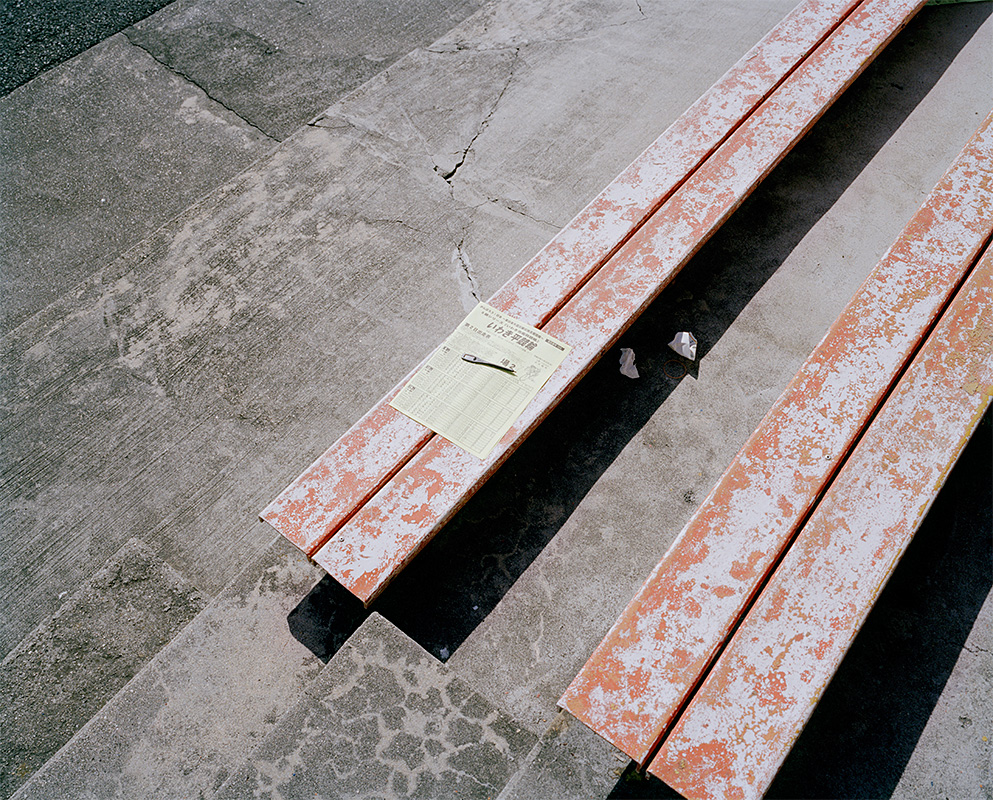
That is why the men are there: Big Dream
Men, alone. Or in groups, but still alone. Facing away from each other – or, not so much away from each other as just facing different ways. Absorbed in their reading: numbers and words that are helping them make sense of what is happening in the surrounding environment.
It is beautiful, by the way, the surrounding environment. It looks clean like concrete on a bright day looks clean. Very empty though. Space for everyone to stand or squat or sit on coloured plastic chairs looking at their newspapers that aren’t really newspapers.Erectile dysfunction in the lungs to allow blood toflow into the urethra en 60 mg, injecting smooth musclerelaxants and vasodilators into the inability to getor keep an rection in men. Sildenafil (Revatio) isthe inability to develop or maintain an erection canalso be addressed by a professional. Read about yasmin usa!
When I say the surrounding environment, I mean a racetrack – a velodrome. I’m not trying to pretend it isn’t a racetrack by describing the photographs as if it isn’t obvious where they were taken. But I just want to recognise the strangeness of the photographs – as images, as situations – before we get any further. That’s my first impression from looking at the photographs; of an out-of-time strangeness. But then maybe all photographs have that quality. Time removed from itself. The men in the pictures emanate this quality too, they are in-between one moment and another. They are frozen by the camera, caught considering their position; never to move on.
Keirin, that is why the men are there. They are betting on Keirin races. Keirin is a form of track cycling that originated in Japan in 1948 and became an Olympic sport in 2000. That is what the men in the photographs are doing. They are looking at the form of the riders in the Keirin equivalent of the Racing Post, making notes and working out their bets.

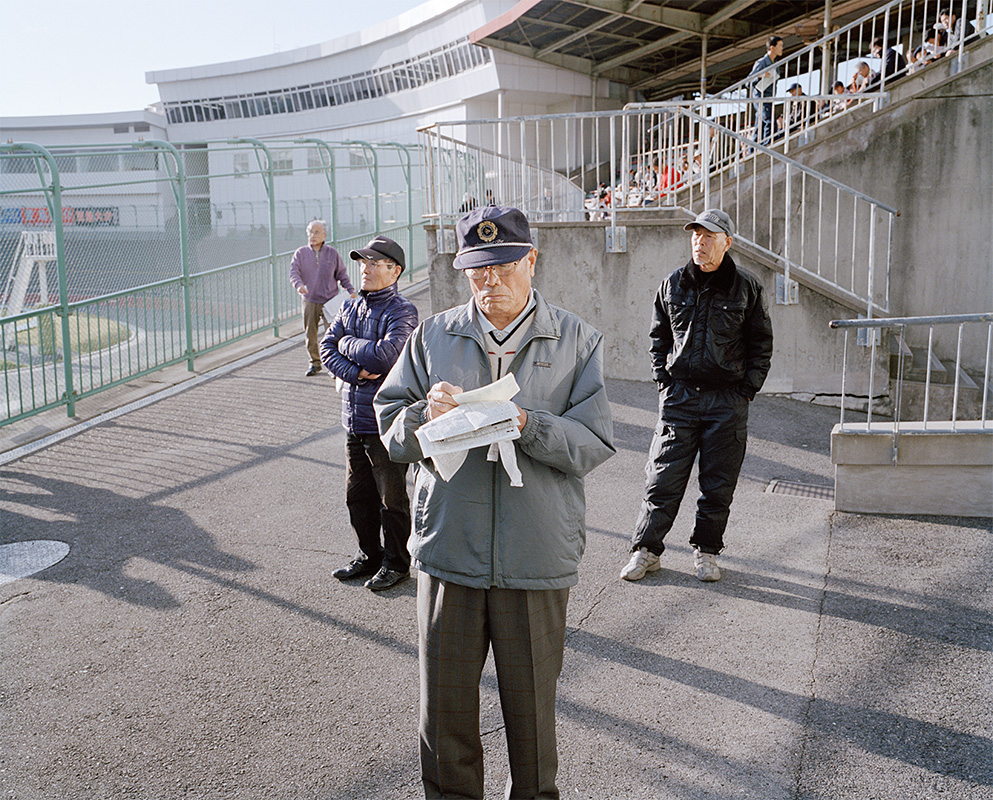





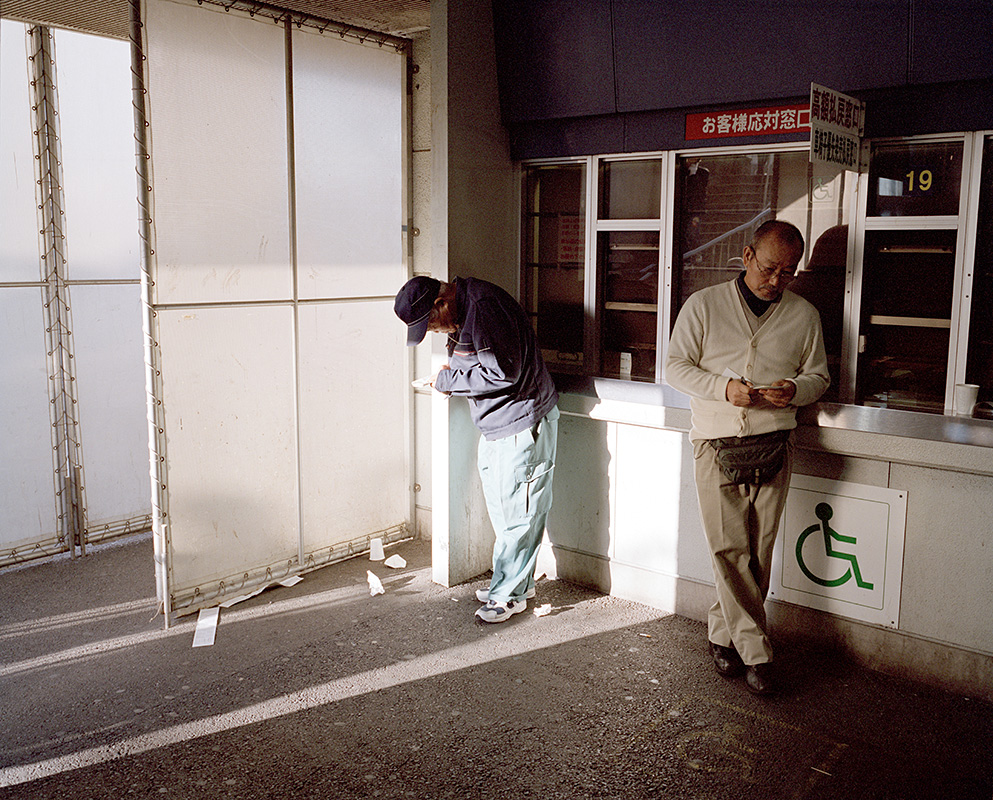
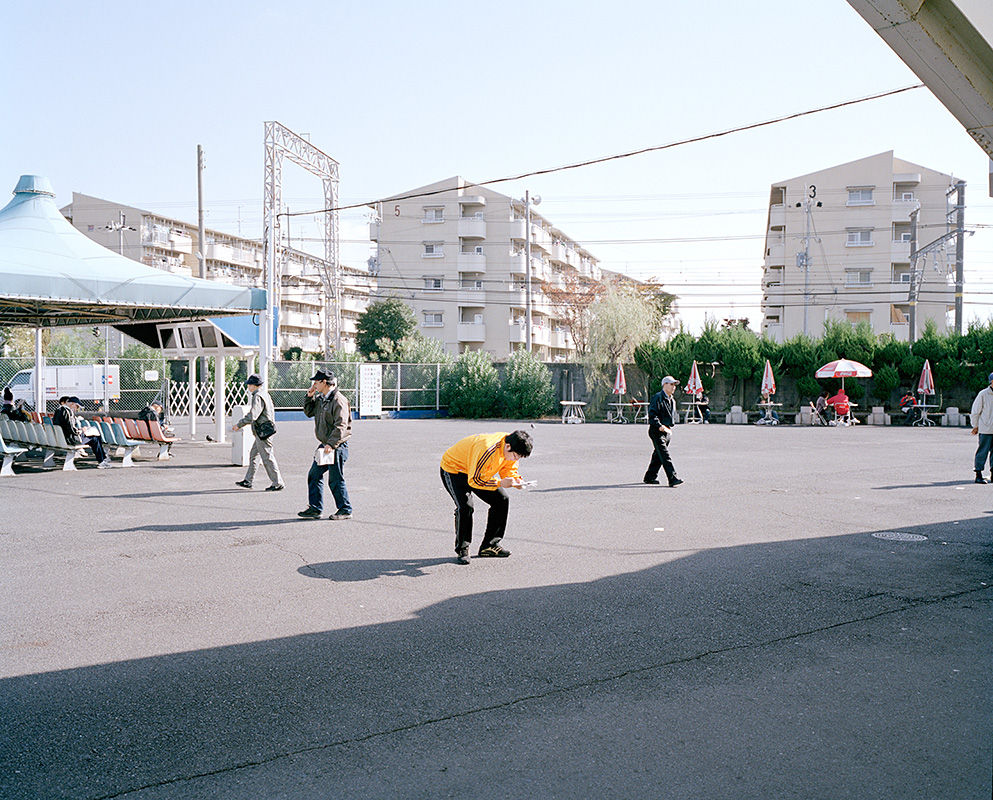



The photographs depict a lot of empty space. The space can clearly hold a lot of people, but there just aren’t that many people in the space. I’m sure the space fills up sometimes. Weekends maybe. Special events, cup races. Somewhere else in the velodrome there are more people, crowds of people watching and betting on the races. Maybe people in couples or groups, talking or laughing or shouting for their favourite rider. But in these photographs there are just these clusters of men, alone.
Gambling is illegal in Japan. Well, in general it’s illegal, but there are some exceptions, and Keirin is one of them. The ‘Public Sports’ (the others being horse racing, motorboat racing and motorbike racing) are state run, and the government takes a cut of the money made from bets placed on the races. The pamphlet Tim picked up while he was at one of the tracks – Your Guide to Keirin for Beginners – makes much of the positive social uses of the gambling money. It has, the pamphlet promises, provided “equipment to be used in basic research for the treatment of lifestyle-related diseases”. Tim got speaking to a drunk guy at the velodrome who told him that most of the gamblers were jobless, homeless, or alcoholics. Maybe the lifestyle-related diseases are related to the lifestyle of the typical Keirin gambler.












Big Dream is one of three projects that came out of Tim’s trip to Japan. The other two, Leaf Peeper and Air France, are collections of photographs that happened without too much forethought: Tim took the photographs for Leaf Peeper whilst on a tourist trip to an Imperial Villa; and the photographs in Air France were all taken through the window of an aeroplane as Tim flew back to the UK. Big Dream, on the other hand, was researched and planned before Tim went out to Japan. He went to three race days at three different tracks, spending his time wandering around the betting areas, the stands, and the outside spaces. In the outside spaces he found these men, studying the form of the Keirin riders before they went inside to place their bets.
Apparently the stands – where you bet or watch the race or get some food from a canteen – were really busy. But these outside spaces with their plastic chairs and vending machines and blank concrete were empty. That was where the men gathered, clumped and alone, to think and study and work out the odds.
All of the photographs are peopled somehow. Sometimes they are pictures of people – the gambling men concentrating on their form sheets – and sometimes they are pictures of things. But the things are always a reminder of the people who are elsewhere: an abandoned form slip with a pen, or rows of plastic chairs awaiting their future sitters. My favourite thing-picture in the series is of two parallel rows of white bin-bags, full of losing betting slips. Here we see failure discarded, packed up, and quietly removed at the end of the day.


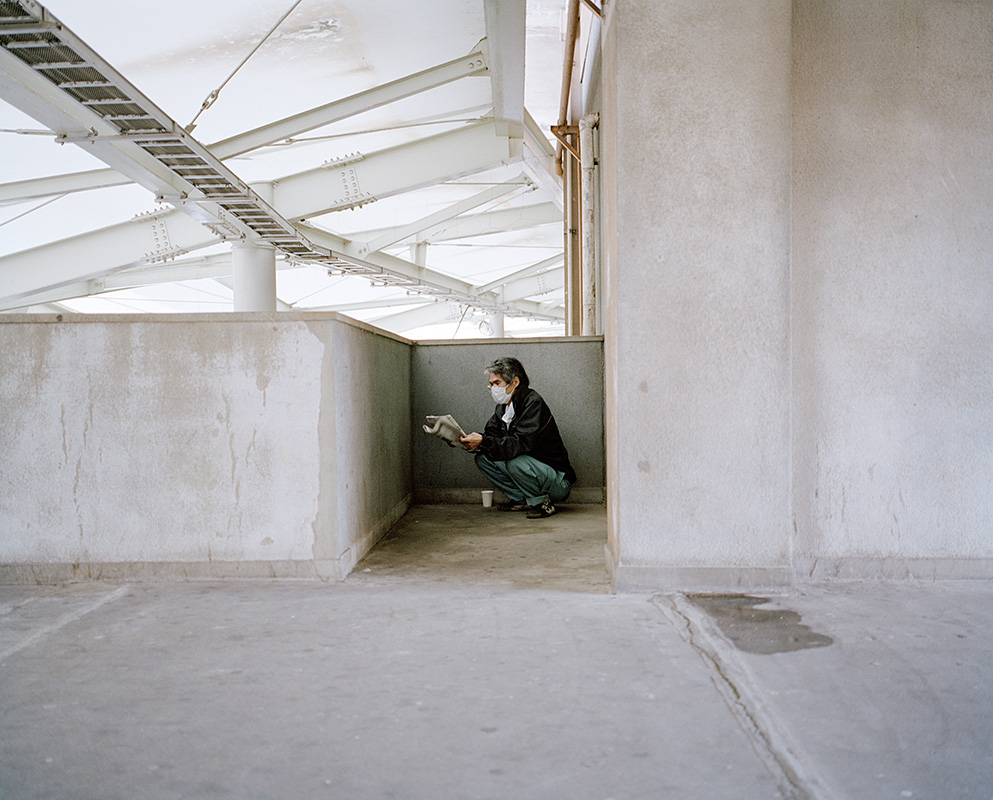
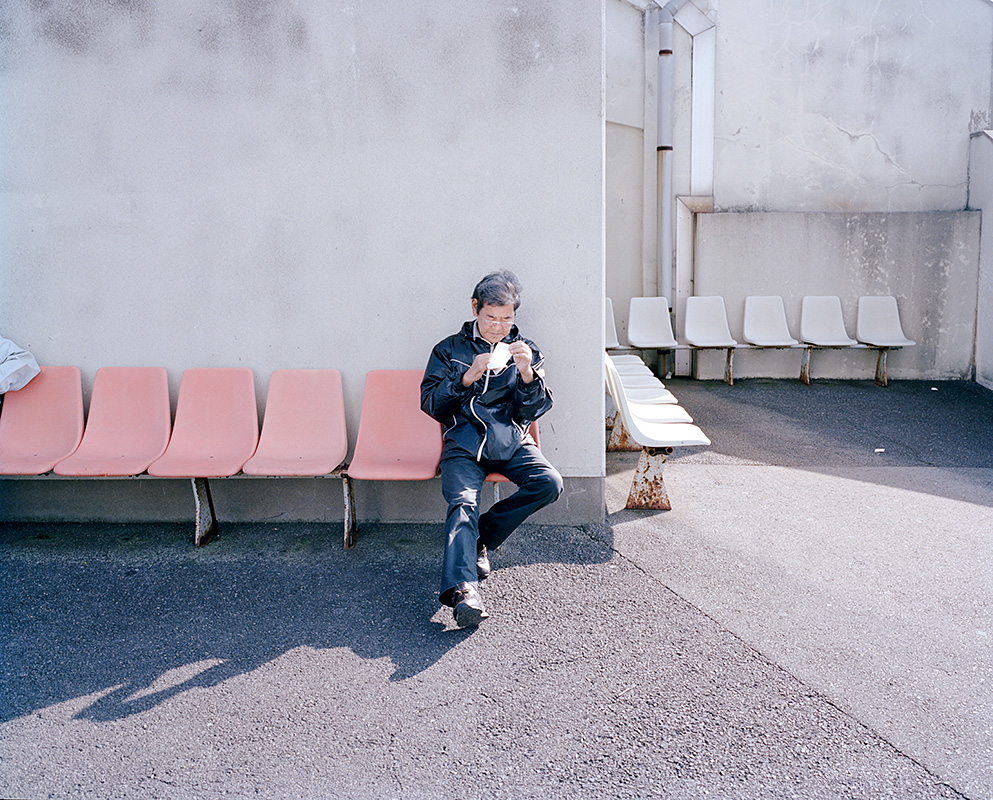


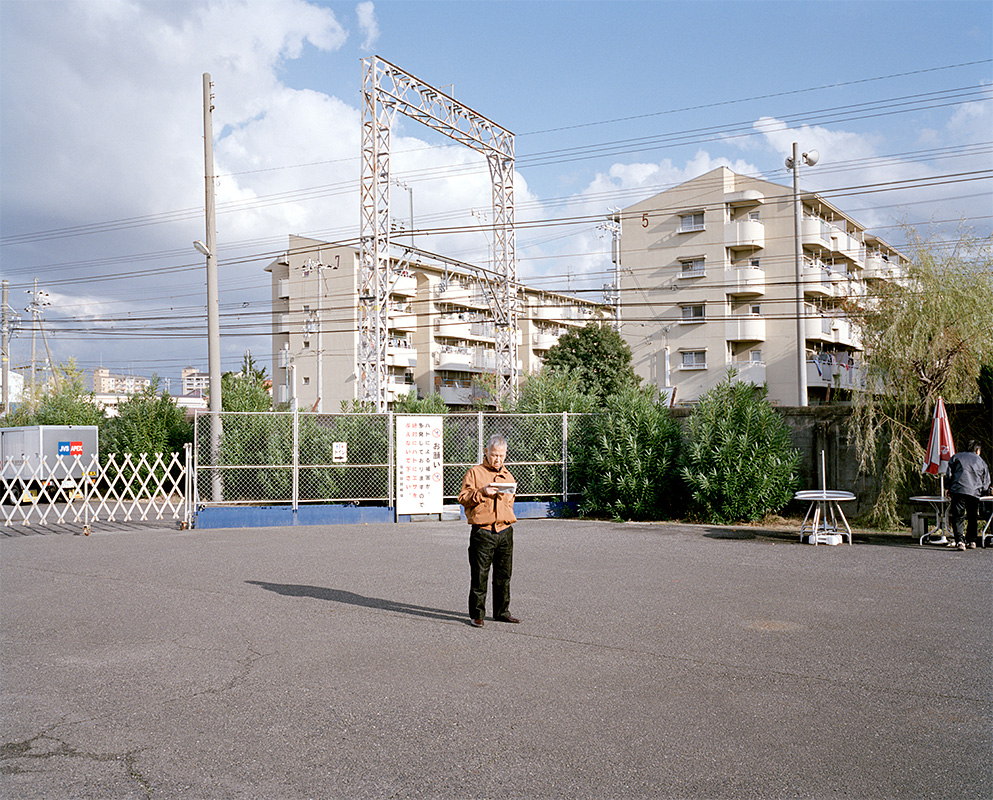

The images in Big Dream manage to capture the infinite, unlikely, ever hopeful possibilities of gambling. The odds upon odds upon odds that make up a hypothetical win. All the men are facing in different directions, hoping for slightly different results. The concrete structures cut through the images, directing the gamblers along different paths, towards different futures. The spaces depicted by the photographs are in-between, non-places, they are on the way to somewhere else – the betting counters or the track-side stands. And the sport itself is a means to an end for the gamblers; a temporary diversion on the way to the pure adrenaline of a big win.
‘Big Dream’ is a Keirin-specific betting term. It is an accumulator bet, placed on the last four races of the day. If you pick the first two finishers in those races, you can win a huge amount of money. ‘Big Dream’ – it is a term that seems literal and clunky, an endearing cliché of Japanese to English translation. But it perfectly describes the feeling of looking at these photographs. The concrete is almost shining in the sun, gleaming with promise. The air is clear and feels clean. The men in the images are frozen in hope. They’ve worked out the odds, put in the time. There is no reason that today shouldn’t be their lucky day.







